Top speed 404 km/h Length 10 m Engine type Radial engine Number built 260 | Wingspan 13 m Manufacturer Vought First flight January 4, 1936 | |
 | ||
Similar Grumman F4F Wildcat, Vought F4U Corsair, Brewster F2A Buffalo | ||
Usa vought sb2u vindicator ww2 imagenes hd usa vought vindicator sb2u ww2 hd images
The Vought SB2U Vindicator was a carrier-based dive bomber developed for the United States Navy in the 1930s, the first monoplane in this role. Obsolete at the outbreak of World War II, Vindicators still remained in service at the time of the Battle of Midway, but by 1943, all had been withdrawn to training units. It was known as the Chesapeake in Royal Navy service.
Contents
- Usa vought sb2u vindicator ww2 imagenes hd usa vought vindicator sb2u ww2 hd images
- Vought sb2u vindicator
- Design and development
- US Navy
- US Marine Corps
- French Navy
- Royal Navy
- Variants
- Operators
- Survivors
- Specifications SB2U 2
- References
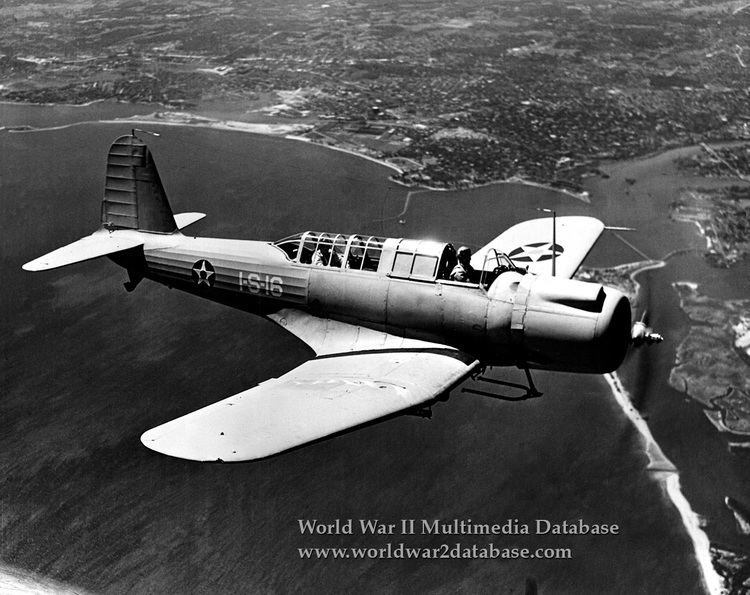
Vought sb2u vindicator
Design and development
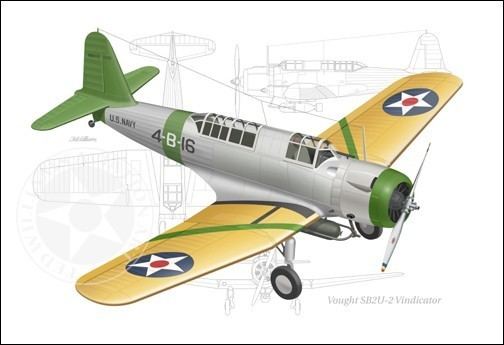
In 1934, the United States Navy issued a requirement for a new Scout Bomber for carrier use, and received proposals from six manufacturers. The specification was issued in two parts, one for a monoplane, and one for a biplane. Vought submitted designs in both categories, which would become the XSB2U-1 and XSB3U-1 respectively. The biplane was considered alongside the monoplane design as a "hedge" against the U.S. Navy's reluctance to pursue the modern configuration.
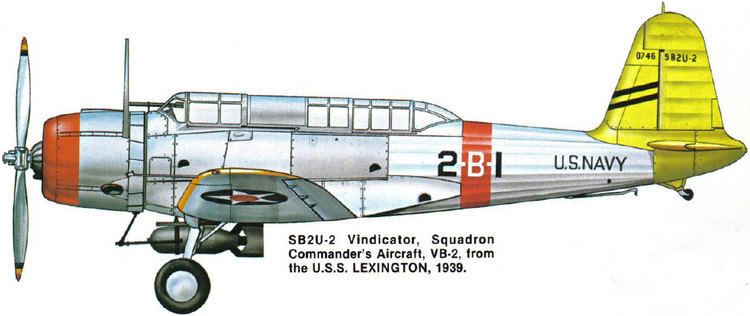
The XSB2U-1 was of conventional low-wing monoplane configuration with a retractable conventional tailwheel landing gear, the pilot and tail gunner being seated in tandem under a long greenhouse-style canopy. The fuselage was of steel tube construction, covered with aluminum panels from the nose to the rear cockpit with a fabric-covered rear fuselage, while the folding cantilever wing was of all-metal construction. A Pratt & Whitney R-1535 Twin-Wasp Junior radial engine drove a two-blade constant-speed propeller, which was intended to act as a dive brake during a dive bombing attack. A single 1,000 lb (450 kg) bomb could be carried on a swinging trapeze to allow it to clear the propeller in a steep dive, while further bombs could be carried under the wings to give a maximum bombload of 1,500 lb (680 kg).

The SB2U was evaluated against the Brewster XSBA-1, Curtiss XSBC-3, Great Lakes XB2G-1, Grumman XSBF-1 and Northrop XBT-1. All but the Great Lakes and Grumman submissions were ordered into production. Designated XSB2U-1, one prototype was ordered on 15 October 1934 and was delivered on 15 April 1936. Accepted for operational evaluation on 2 July 1936, the prototype XSB2U-1, BuNo 9725, crashed on 20 August 1936. Its successful completion of trials led to further orders.
The SB2U is prominently featured in the 1941 film Dive Bomber.
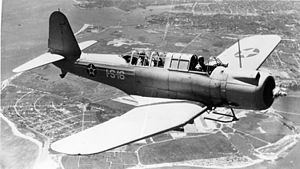
There were 260 examples of all Vindicator variants produced, and a single example is preserved at the National Museum of Naval Aviation at NAS Pensacola.
U.S. Navy
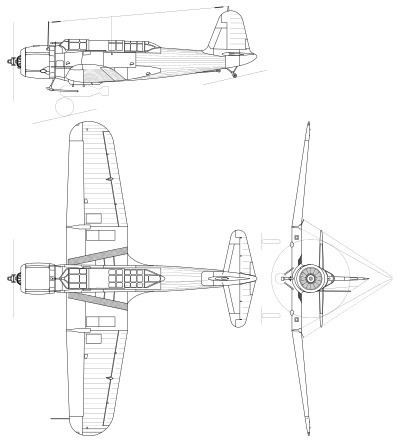
Vindicators served on the carriers Lexington, Saratoga, Ranger, and Wasp from December 1937-September 1942. Air Group Nine, destined for Essex, trained in Vindicators aboard the escort carrier Charger, but they transitioned to the Douglas SBD Dauntless before Essex joined the war.
U.S. Marine Corps
VMSB-131 and VMSB-241 were the only two USMC squadrons that fielded the Marine-specific SB2U-3 between March 1941 and September 1943. VMSB-241's Vindicators saw combat at the Battle of Midway in June 1942. Airmen with experience in more modern aircraft spoke disparagingly of SB2Us as "vibrators" or "wind indicators" in their later combat assignments. Captain Richard E. Fleming piloted a SB2U-3 Vindicator in an attack on the Japanese cruiser Mikuma on 5 June 1942, for which he was posthumously awarded the Medal of Honor.
French Navy
Based on the SB2U-2, the V-156-F incorporated specific French equipment. Briefly after the deliveries started in July 1939, V-156-F crews were trained for carrier operations aboard the French carrier Béarn, but when the war broke out the old carrier was declared too slow for operational service. As a result, V-156-F-equipped units escadrilles AB 1 and AB 3 were based ashore when the Battle of France started. AB 1 sustained heavy losses while attacking bridges and German ground targets in Northern France, while AB 3's V-156-Fs were briefly engaged against the Italians. By the time of the Armistice, there were only a handful of remaining Voughts in French hands, and the type was phased out of service.
Royal Navy
France had placed an order for a further 50 V-156-Fs in March 1940, with delivery planned from March 1941. Following the defeat of France, this order was taken over by the British government for use by the Royal Navy's Fleet Air Arm, who named the aircraft the Chesapeake. The British required several modifications to the Chesapeake, including the additional fuel tank fitted to the SB2U-3, additional armor and heavier forward firing armament, with four rifle caliber machine guns replacing the single forward-firing Darne machine gun of the French aircraft. Fourteen Chesapeakes were used to equip a reformed 811 Naval Air Squadron on 14 July 1941. The squadron, whose crews referred to it as the "cheesecake", intended to use them for anti-submarine patrols, and they were earmarked for the escort carrier HMS Archer.
By the end of October that year, it had been decided that the Chesapeakes were underpowered for the planned duties and would not be able to lift a sensible payload from the small escort carriers. Accordingly, they were withdrawn from 811 Squadron in November 1941 for use as training aircraft and the unit was re-equipped with the biplane Fairey Swordfish.
Variants
Operators
Survivors
Only one known survivor exists today:
Specifications (SB2U-2)
Data from
General characteristics
Performance
Armament
